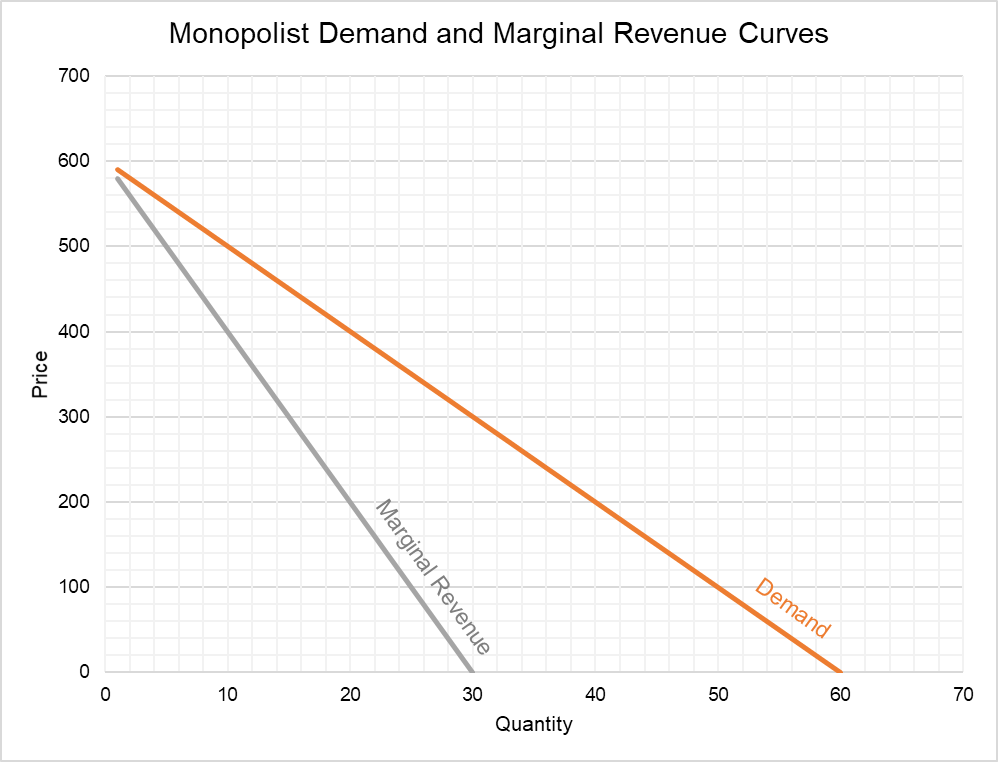Monopoly
In economics, a monopoly is a market structure where only a single firm supplies a product which has no close substitutes. A firm which has a monopoly is called a monopolist.
Perfect competition and monopoly are two extreme cases of market structure. While perfect competition is characterized by price-taking behavior, monopolies have significant market power which enables them to dictate a price which is significantly higher than their marginal cost. Due to extensive barriers to entry, a monopolist can earn positive economic profit even in the long-run
Characteristics
The three defining characteristics of a monopoly are existence of only one seller (and downward-sloping demand curve), non-existence of close substitutes (and low elasticity of demand) and very high barriers to entry.
Monopolist’s Demand Curve and Marginal Revenue
Since a monopolist is the sole producer, its demand curve is the market demand curve i.e. a downward-sloping demand curve. As shown in the graph below, a monopolist’s marginal revenue is less than its price.
Marginal revenue of a monopolist (MM) is given by the following equation:
$$ {\text{MR}} _ \text{M}=\text{P}+\text{Q}\times\frac{\Delta \text{P}}{\Delta \text{Q}} $$
The equation above says that when a monopolist increases its sales by one unit, it can potentially increase revenue by P. However, due to downward-sloping demand curve, he must reduce his price for all other units too. Both these factors causes marginal revenue of a monopolist to fall.
The marginal revenue curve of a monopolist is typically a straight-line which is half-way below his demand curve as shown in the graph.

No Close Substitutes
It is important that the product offered by a monopolist has no close substitutes otherwise consumers could switch to the substitute products if the monopolist attempts to increase price and this would eliminate the monopolist’s ability charge high prices.
High Barriers to Entry
Monopolists typically earn positive economic profit which motivates other firms to enter the market and have a chunk of the pie too. This is why high barriers to entry are important for a monopoly to exist and survive. Barriers might exist due to laws and regulations (such as patents, copyrights, etc.), access to critical natural resource or due to economic phenomena such as economies of scale, etc.
But why do some markets are easy to monopolize and others not so easy? It depends on a number of factors including elasticity of demand of the product, existence of economies of scale, control of a key resource, existence of legal barriers, etc.
Examples
The following table shows some real-life examples of monopolies:
| Segment | Monopolist |
|---|---|
| Word processors and spreadsheets | Microsoft |
| Movie streaming | Netflix |
| Utilities | Duke Energy (US), Eskom (South Africa) |
| Social networking | |
| Video streaming | YouTube |
| Search | |
| Football | FIFA |
| Online retail | Amazon |
| Beer | ABInBev |
by Obaidullah Jan, ACA, CFA and last modified on